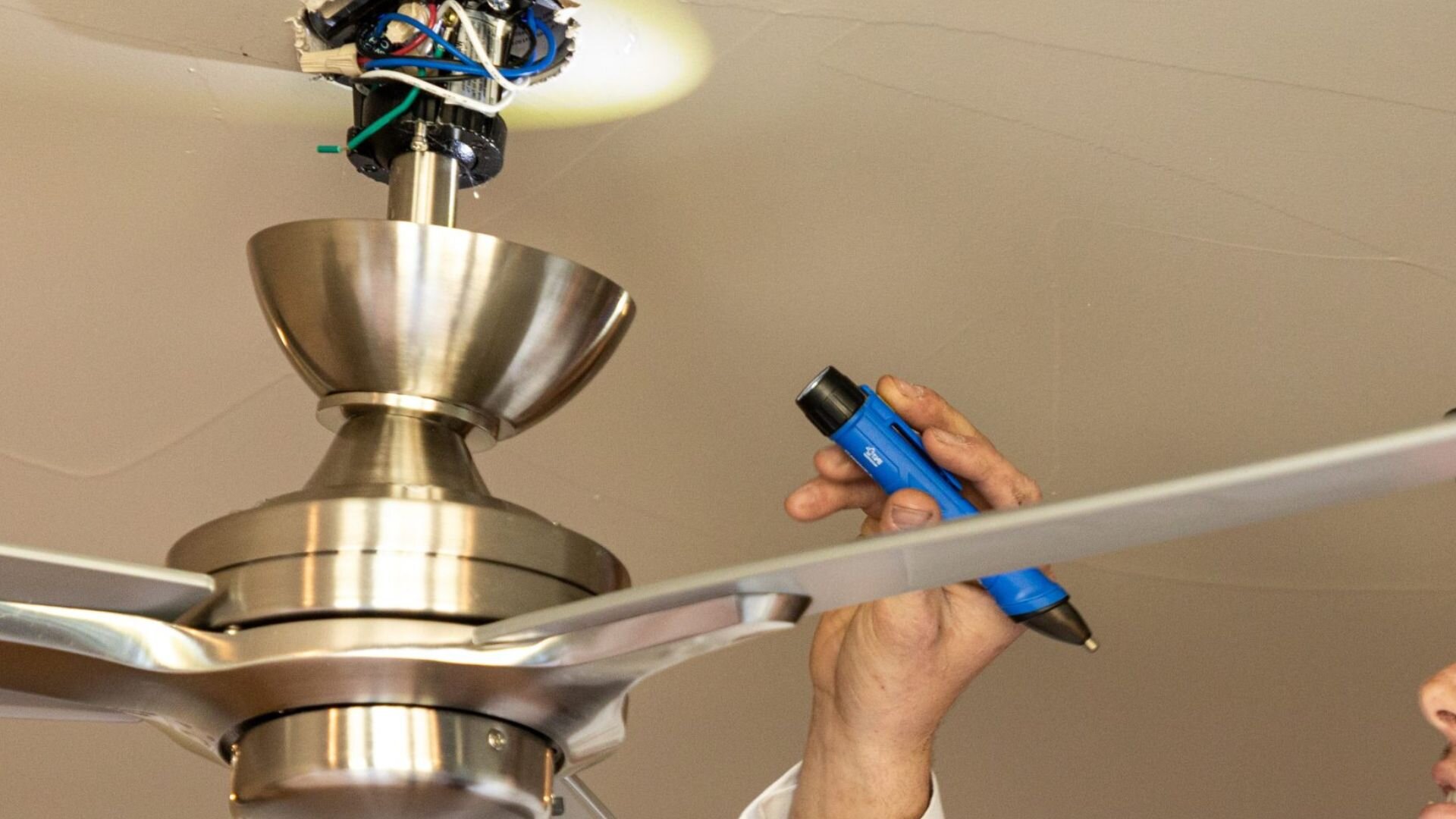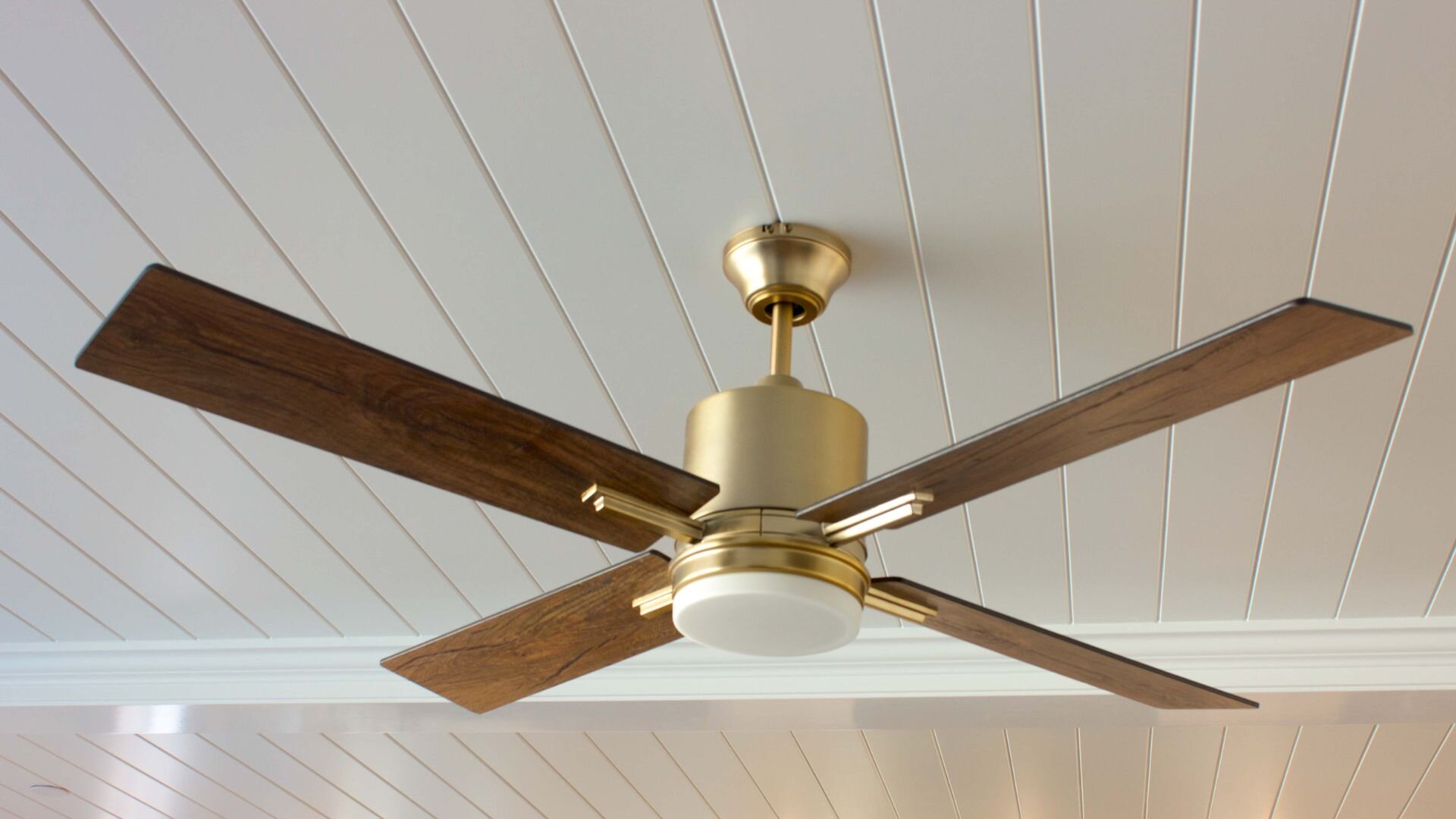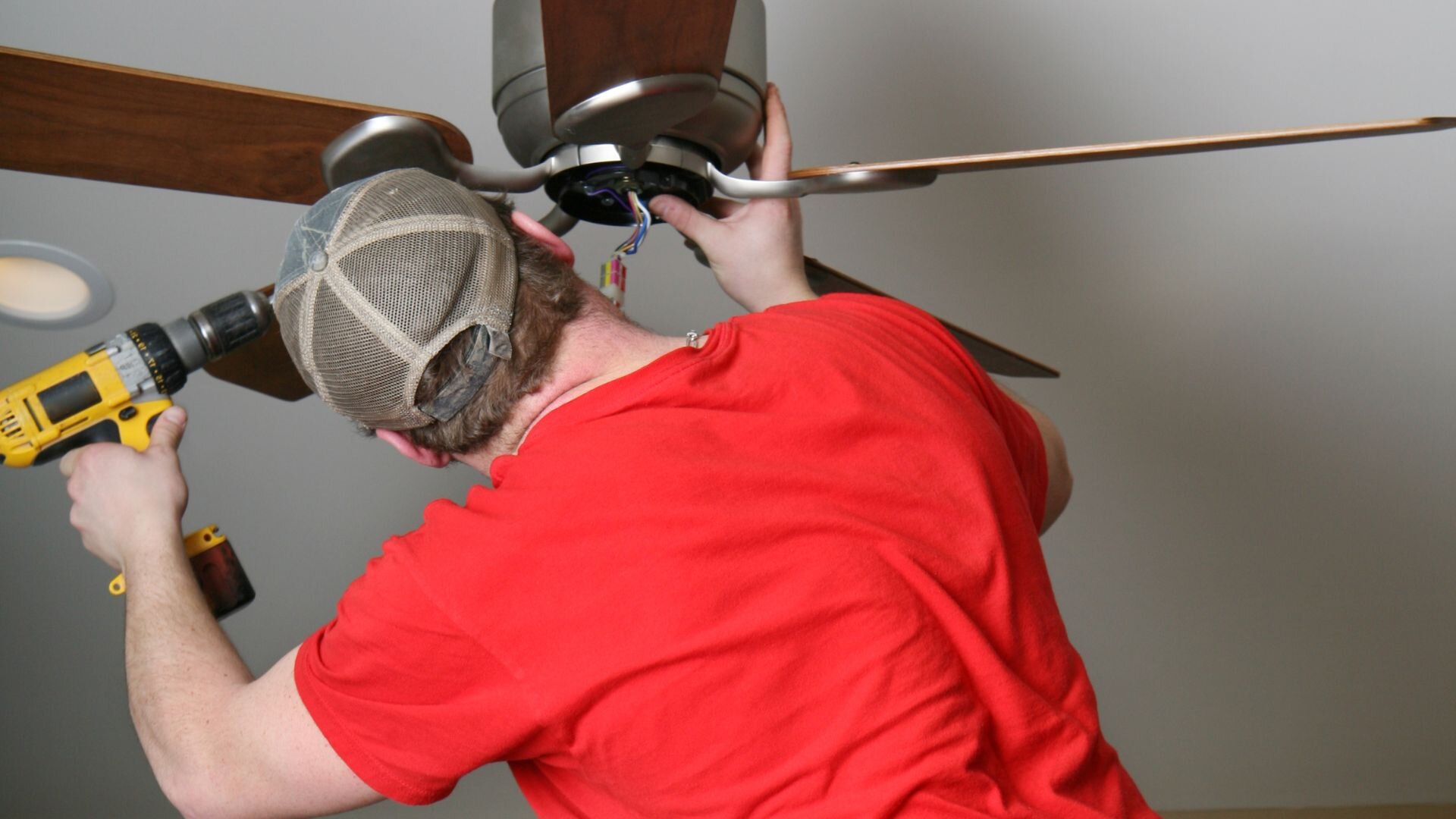Is your ceiling fan acting up, making odd noises, or is it not spinning like it used to? Whether cooling your room in summer or helping circulate warm air in winter, a ceiling fan works hard year-round. And with constant use, it's no surprise they can start showing signs of wear.
Sure, it's tempting to shrug off small issues at first, but early ceiling fan troubleshooting can save you from bigger headaches like a complete failure, costly repairs or having to replace the fan altogether.
This article will walk you through the most common ceiling fan problems and what they typically mean. Learn more about residential wiring guide. From strange noises and flickering lights to fan blades that wobble or stall, we'll help you get a clearer picture of what's happening.
So, let's look at the most common problems with ceiling fans and how to fix them when they show up.
Fan Not Turning On: Electrical Checks and Common Triggers

If your ceiling fan doesn't start, check the wall switch, dead batteries in the remote control, loose wire nuts, or a tripped circuit breaker. Start with the basics: see if the wall switch is drawing power from the power source. Then, flip the circuit breaker off and on again and test the fan immediately.
Try fresh batteries in the remote control and test another remote if you've got one. If that works, the issue might be the fan's receiver. Also, inspect the wiring; loose wire nuts or faulty wiring can easily interrupt your ceiling fan's operation.
If flickering lights or strange smells come from the light fixture or motor housing, it may point to deeper electrical issues. Avoid tinkering with the wiring or the ceiling fan capacitor yourself, as it is risky and can damage the motor.
If the problem persists after basic checks, call a licensed electrician. It's the safer choice when electrical connections are involved.
Wobbling Ceiling Fan: Causes and Safe Solutions
If your ceiling fan wobbles, it's likely caused by loose screws, improper installation, or misaligned blades. Over time, blades may shift, especially without regular maintenance or when accumulated dust builds up.
Check for loose blade holders and tighten all screws, especially around the motor housing and arms. Dust or build-up can reduce balance and affect performance, so a quick clean helps. A blade balancing kit can help even things out and improve the fan's aesthetic appeal.
Long-term issues can crop up if the ceiling fan is installed without properly aligning the fan blades. If the ceiling fan wobbles consistently or worsens, turn it off immediately. A wobbly ceiling fan can loosen electrical connections or even fall, causing severe damage.
If it still doesn't function correctly after adjustments, bring in a professional. It's the safest way to keep your energy-efficient ceiling fan in good shape.
Noisy Operation: Diagnosing Buzzes, Clicks, and Rattles
A noisy fan can indicate several issues. Buzzing might indicate electrical problems with the ceiling fan light or motor, while clicking sounds can come from loose blade holders or worn-out bearings.
Start by checking for loose screws and tightening anything around the fan blades and motor housing-also, clean off accumulated dust,especially around the pull chain and light fixture. Dust can build up and add to the noise.
If the noisy fan continues, you could have a faulty capacitor or worn-out internal parts. Ceiling fan troubleshooting only goes so far. Persistent noise might mean it's time to replace key components.
Turn off the power on the fuse box before cleaning or checking. Call a licensed technician if flickering continues or the noise disappears. Internal electrical issues aren't something to tackle without proper training.
Speed Issues: Fan Too Slow or Fast?

If only one speed works or the fan seems to ignore changes, you might face a faulty capacitor, remote control problems, or issues with the speed settings.
Test the ceiling fan using both the pull chain and remote. If the fan behaves erratically or doesn't adjust as expected, the ceiling fan capacitor could be to blame.
Pay attention to whether the fan changes speed when the ceiling fan light is on-this could signal problems with the fan's receiver or its electrical connections.
Never try to replace a capacitor yourself; leave that to a licensed electrician. Incorrect fixes can lead to even more damage.
Older models may also need a hard-to-find replacement part. In that case, a new fan might be more cost-effective and energy-efficient in the long run.
Fan Reversing Problems: When the Direction Switch Fails
The reverse switch is essential for year-round use, pushing warm air down in winter and pulling it up in summer. But if it fails, your ceiling fan might get stuck, start making grinding noises, or shut off altogether.
These signs usually mean the reverse switch isn't functioning correctly. Dust, wear and tear, or improper use can all contribute to the failure.
Never flip the switch while the fan is moving-it can damage internal components like the ceiling fan capacitor or motor.
If your ceiling fan gets stuck or the issue won't go away, don't try to fix it yourself. Problems involving the motor or reverse switch are best left to professionals.
Remote Control Malfunctions: Signal, Battery or Syncing Problems
If your fan isn't responding to the remote, the problem could be weak signals, flat batteries, or interference from nearby electronics. Try new batteries first, and test the remote on another ceiling fan if you have one.
Sometimes, the fan's receiver needs to be reset. Check your manual for instructions on how to resync it. Also, make sure your fan has power and the fuse box hasn't tripped.
Just a heads-up: replacement remotes need to match your fan model exactly. A generic one might not do the trick.
If the fan doesn't work or the light flickers despite new batteries, it could point to deeper electrical issues, not just remote control trouble.

Keep Your Cool & Let the Pros Handle the Rest
Ceiling fan problems might look easy to fix on the surface, but hidden faults and worn parts can pose real safety risks. Whether your ceiling fan wobbles, the light flickers, or just won't power on, having an expert take a look is the safest bet.
At Enersol Electrical, our team specialises in ceiling fan troubleshooting and repairs. We've seen everything from faulty wiring to remote syncing to balancing issues, and we'll get your ceiling fan working correctly again.
We offer ceiling fan services with friendly, expert support and cost-effective solutions to keep your fan in top shape.
Need help? Contact Enersol Electrical on the Gold Coast today, and let us fix your ceiling fan correctly.